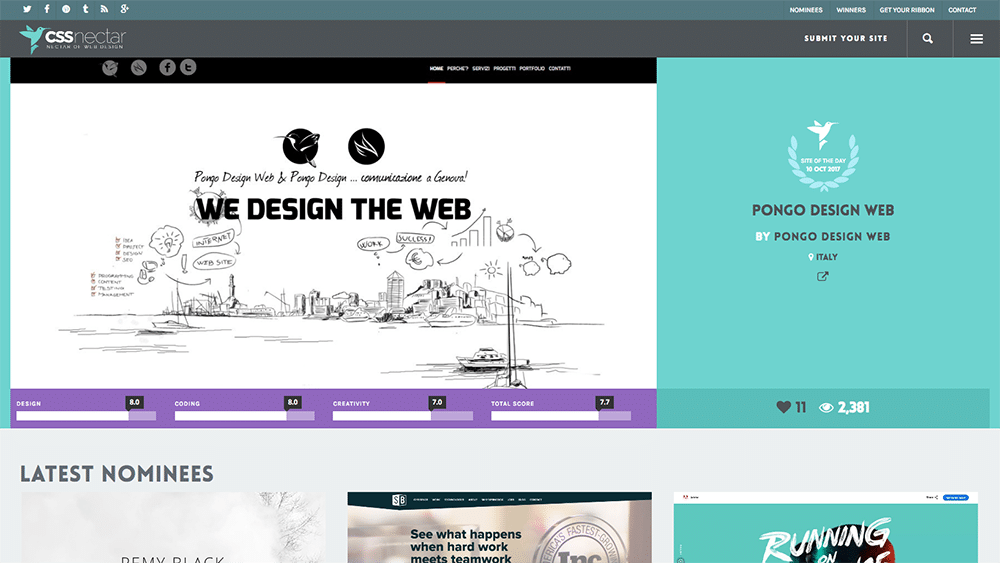Why Responsive Website Design is Essential for Today's Digital Market
Why Responsive Website Design is Essential for Today's Digital Market
Blog Article
Increase Interaction With Cutting-edge Internet Site Layout Solutions
An attentively crafted customer experience, underpinned by tactical aesthetic design and interactive components, can considerably boost user interaction. By discovering different methods such as responsive design and individualized web content, services can create a platform that not only astounds individuals but additionally promotes long-lasting loyalty.

Recognizing User Experience
Recognizing customer experience (UX) is crucial for developing efficient site style solutions, as it directly affects just how customers interact with electronic systems. An extensive UX strategy includes numerous components, consisting of use, accessibility, and individual contentment, all of which add to the total performance of a web site.
To start with, functionality focuses on exactly how quickly individuals can navigate and discover the information they look for. Access guarantees that all customers, including those with disabilities, can successfully communicate with the website.
Additionally, recognizing customer characters is important for tailoring the experience to satisfy certain target market demands. By conducting individual research and screening, designers can gather insights that inform design decisions, making sure the website not just satisfies visual objectives however additionally fulfills functional needs. Eventually, a thoughtful technique to UX style cultivates interaction, motivates retention, and enhances total customer satisfaction, which are important for the success of any electronic platform.
Visual Layout Methods
Integrating effective visual design methods is important for recording customer focus and boosting the general individual experience on a site. A well-thought-out aesthetic hierarchy guides customers with the content, allowing them to easily navigate and absorb info. This can be accomplished through the tactical usage of typography, color pattern, and spacing, which collectively produce a natural and engaging layout.
Shade plays a crucial function in establishing and evoking feelings brand name identification. Utilizing a balanced color palette that lines up with the brand name's principles can promote familiarity and count on. Furthermore, incorporating top quality pictures and graphics enhances visual appeal and can considerably improve individual interaction.
Whitespace, typically ignored, is just as essential as it allows content to breathe and avoids overwhelming customers with mess. It assists in easier reading and understanding, causing an extra enjoyable surfing experience.
Lastly, consistency in design elements-- such as button fonts, styles, and icons-- ensures a smooth customer trip, enhancing the brand name's professionalism and reliability. By tactically implementing these aesthetic design methods, websites can not only attract site visitors however likewise motivate them to stay longer and engage even more deeply with the web content.
Interactive Elements for Interaction
Engaging users properly commonly hinges on the execution of interactive aspects that invite involvement and foster a dynamic surfing experience. These elements, including quizzes, polls, and interactive infographics, encourage customers to proactively get involved rather than passively take in content. By incorporating such features, internet sites can not just record focus yet likewise boost customer retention.

Gamification is another effective method. Integrating game-like elements, such as achievements or rewards for finishing tasks, can change ordinary communications right into delightful experiences. This method not only enhances engagement visit this site right here yet additionally encourages customers to return, developing a dedicated audience.
Moreover, interactive aspects can assist in social sharing, amplifying a web site's reach. Functions like remark areas, share switches, and user-generated content areas foster area interaction, turning visitors right into energetic participants. website design. Inevitably, the critical use interactive elements is necessary for developing a engaging and engaging site that resonates with users
Responsive and Flexible Style
A well-designed site should prioritize adaptive and responsive layout to make certain optimum individual experiences across a variety of devices and display sizes. Responsive layout employs liquid grids and flexible images, allowing the design to automatically change based on the visitor's screen dimension. This method ensures that individuals can easily connect and navigate with the content, no matter whether they are utilizing a desktop computer, smartphone, or tablet .
On the other hand, adaptive layout utilizes predefined formats that are customized to particular tool groups. This means that the internet site spots the kind of device being made use of and offers the appropriate design, which can improve loading times and maximize the screen of necessary components. While both techniques intend to enhance functionality, responsive design is often favored for its fluidity and seamless transition in between devices.
Incorporating flexible and responsive style not only boosts customer satisfaction however additionally positively influences search engine positions. Internet search engine prioritize mobile-friendly websites, therefore increasing visibility and attracting even more site visitors. Investing in these design approaches is important for services looking to involve their audience efficiently and maintain an affordable side in look at more info today's digital landscape. website design.
Analyzing Individual Comments and Data
Customer comments and information evaluation are vital elements of efficient website design, as they give beneficial understandings into user habits and preferences. By methodically accumulating and checking out user responses via studies, use screening, and analytics devices, designers can recognize pain points and locations for enhancement. This data-driven method allows organizations to tweak their web site aspects, guaranteeing that the customer experience lines up with target market assumptions.
Examining metrics such as bounce rates, time on web page, and click-through rates uses a measurable viewpoint on customer interaction. These metrics help designers recognize which material reverberates and which locations may call for optimization. A/B screening can be utilized to assess variants in style, allowing developers to make enlightened choices based on user interactions.
Integrating customer feedback not just improves web site use yet additionally fosters a feeling of community and count on. Involving with individuals via responses loopholes grows commitment and encourages repeat check outs. Eventually, leveraging user feedback and information analysis is important to developing a dynamic, user-centered site that adjusts to developing customer a knockout post demands and choices, consequently driving higher involvement and complete satisfaction.
Conclusion

An attentively crafted individual experience, underpinned by strategic aesthetic design and interactive aspects, can dramatically improve customer interaction.Incorporating efficient visual layout strategies is crucial for recording individual attention and boosting the overall user experience on a web site.User responses and data evaluation are essential elements of effective website layout, as they offer beneficial insights into customer behavior and preferences. Eventually, leveraging customer responses and data evaluation is integral to creating a vibrant, user-centered web site that adjusts to progressing customer requirements and choices, therefore driving greater involvement and satisfaction.
In conclusion, cutting-edge website layout solutions considerably improve customer involvement by focusing on user experience, utilizing efficient visual techniques, and integrating interactive components.
Report this page